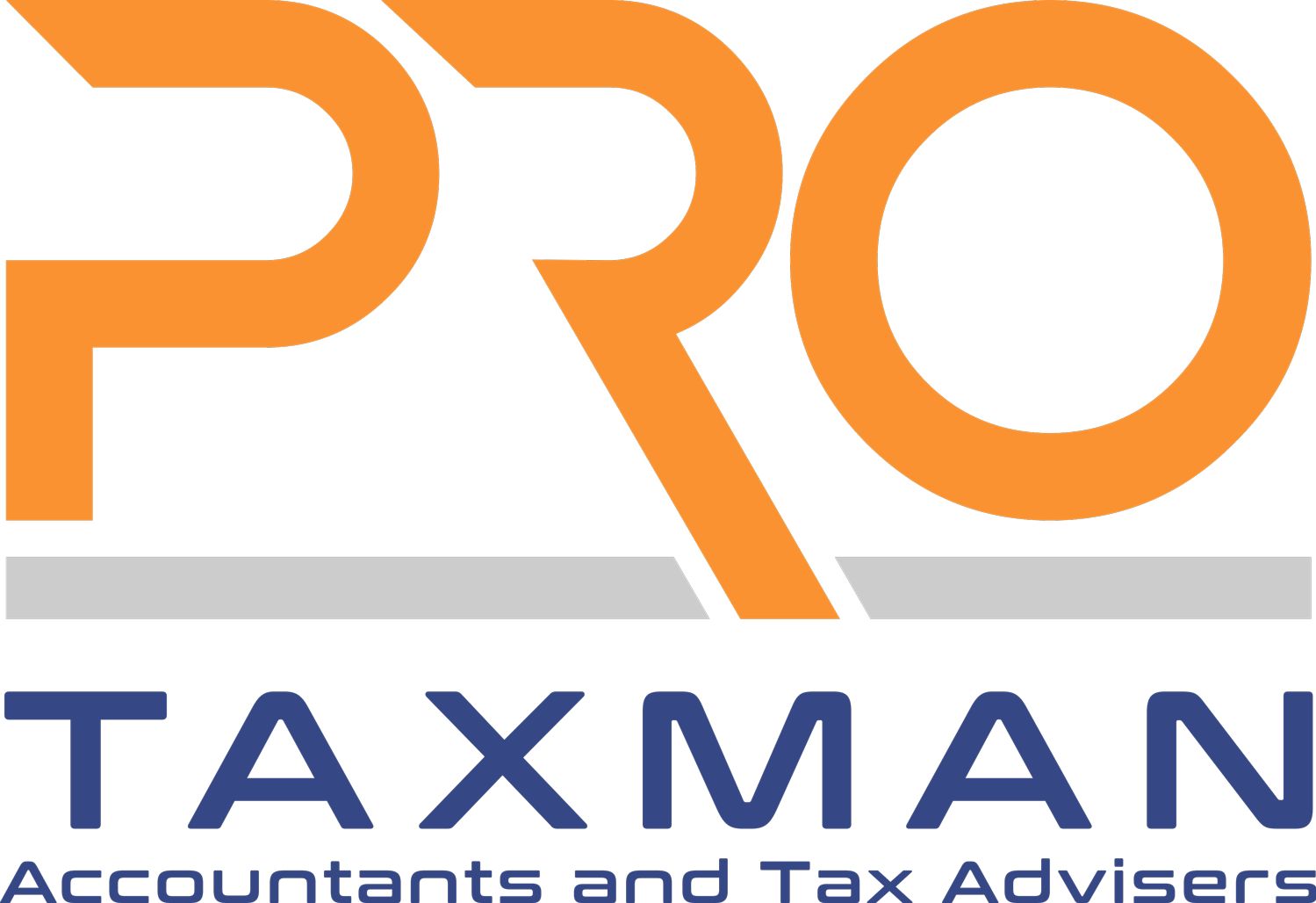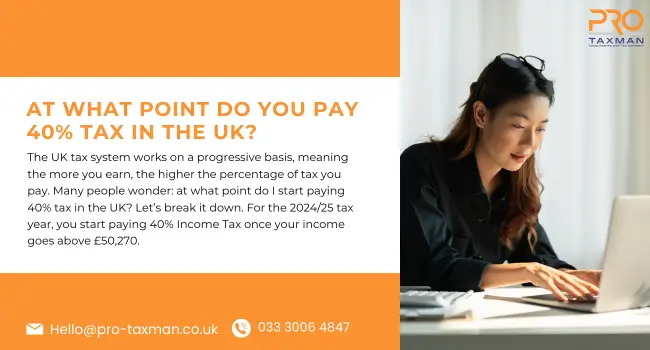The UK tax system works on a progressive basis, meaning the more you earn, the higher the percentage of tax you pay. Many people wonder: at what point do I start paying 40% tax in the UK? Let’s break it down.
The 40% Tax Rate Threshold
For the 2024/25 tax year, you start paying 40% Income Tax once your income goes above £50,270.
Here’s how the brackets look:
- Up to £12,570 – 0% (Personal Allowance)
- £12,571 to £50,270 – 20% (Basic Rate)
- £50,271 to £125,140 – 40% (Higher Rate)
- Over £125,140 – 45% (Additional Rate)
So, if your total taxable income is £60,000, only the portion above £50,270 (£9,730) is taxed at 40%.
What Counts as Taxable Income?
Taxable income includes:
- Salary and wages
- Self-employment income
- Rental profits
- Dividends and interest (above allowances)
- Some benefits and pensions
How Your Personal Allowance Affects This
The standard personal allowance is £12,570. However, if your income exceeds £100,000, your allowance starts to reduce by £1 for every £2 earned. By the time you earn £125,140, you will lose your allowance entirely.
Tips for Tax Planning
- Use allowances – such as the dividend allowance and savings allowance.
- Claim expenses – if you’re self-employed or a landlord.
- Consider pension contributions – they reduce your taxable income and can help keep you below the 40% threshold.
- Gift Aid donations – can also extend your basic rate band.
Quick FAQs
1. How Many People in the UK Are in the 40% Tax Bracket?
It’s estimated that around 4.4 million taxpayers currently fall into the 40% tax band. This number has been steadily rising due to frozen tax thresholds, which pull more earners into higher brackets as wages increase.
2. How to Avoid 40% Tax in the UK?
You cannot legally avoid paying tax if your income places you in the higher bracket, but you can reduce how much you pay by using tax-efficient strategies:
- Pension contributions – Reduce taxable income and build retirement savings.
- ISA allowances – Savings and investments grow tax-free.
- Gift Aid – On charitable donations expands your basic-rate tax band.
- Salary sacrifice schemes – For pensions, childcare, or cycle-to-work.
These options can legitimately lower your taxable income and reduce the portion subject to 40%.
3. How Much Tax Do I Pay on £100k Salary in the UK?
On a £100,000 salary (2024/25):
- First £12,570 – 0% tax (Personal Allowance).
- Next £37,700 – taxed at 20% = £7,540.
- Next £49,730 – taxed at 40% = £19,892.
Total Income Tax = £27,432.
Important: Important: When your income exceeds £100,000, your Personal Allowance will decrease by £1 for every £2 earned above this threshold. By £125,140, you lose it entirely, meaning effective tax rates are higher between £100,000–£125,140.
Final Thoughts
You pay 40% tax in the UK once your income goes over £50,270. But with careful planning, you can legally reduce your liability and make the most of your allowances. Always seek advice from a professional accountant to tailor strategies to your situation.

